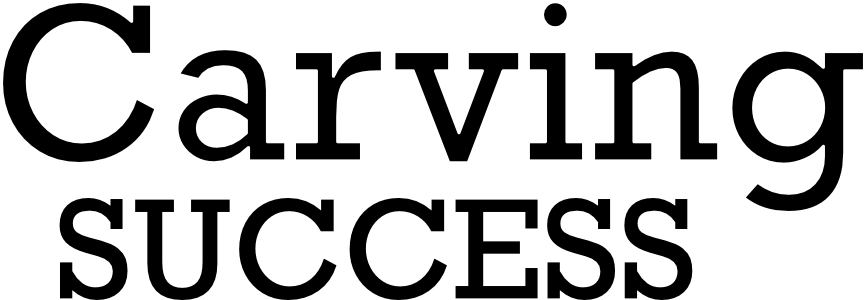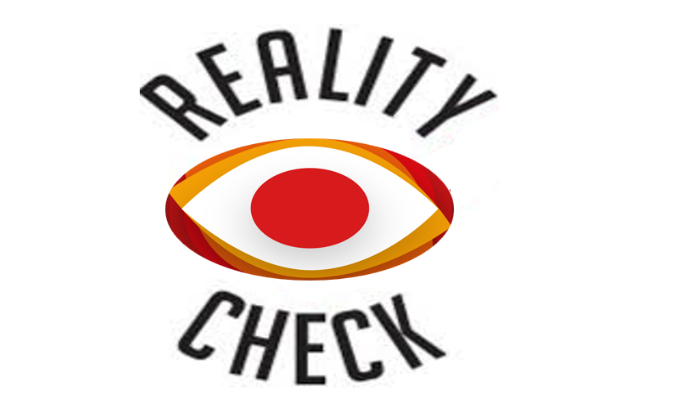
In today’s complex and dynamically changing times, we see that individuals find themselves being challenged on the work, social and personal fronts. This is causing a high degree of stress and anxiety for many.
This article focuses on highlighting the possible influences of work environment changes on a professional’s psyche. While a basic concept is presented, it could be applied to other spheres of life too. Changes in teams, colleagues, bosses, job profiles, roles, and technology, among others, cause personal stress and tension. The reasons for change could be many like a new job, role expansion, restructuring, amalgamations, etc. Also, the anxiety caused by apprehensions of a personal fit into a new environmentis common. In such situations, it is always good to step back and identify and understand the stressors. Doing this helps to address stress better and with clarity.
The main reason for stress is the lack of knowledge of how the other person will react to a situation. In simple words, people are unclear about whom or how much to trust the other person without prior experience of working together. This boils down to “Unclear Trust Expectations” between people. Hence a manager should not be offended or stressed if his boss does not trust him, as well as his subordinates or colleagues. Trust is built over a series of relationship experiences where mutual expectations are met and a level of trust is built.
The matches and mismatches of qualifications, experience, track record and other attributes are normally talked about in new team bonding, but the main and overlooked reason is the changed “Stakeholder Trust Network” among team members. The stakeholder engagement trust equation between people needs to be built through multiple repetitive engagement experiences – Building confidence or trust in each other’s expectations vis-à-vis, commitments, transparency, communication, openness and sharing, besides many others. While these equations may be supported by references and reports, the actual trust validation is developed by personal relationship engagement experiences.
The anxiety in new relationships generally impacts personal and group performance levels negatively. Moving into a new role or situation brings in a whole new set of trust relationships. The stakeholder engagement trust network needs to be assessed and worked upon to build an adequate comfort level with each stakeholder. It involves an appreciation of the different stakeholder mindsets (expectations) engaged in the network. Once this is understood, the trust-building journey becomes smoother, faster, more acceptable and with less pain.
To take advantage of a changed situation, it is essential to appreciate and manage the trust network effectively. To do this a clear understanding of the different “Trust Levels” and what they mean is key.
Trust Levels (A good way to begin is to look at a simple explanation of trust levels)
L1: Blind Trust: This is mostly based on gut feelings; a minimum or superficial due diligence is carried out. Usually, references to cold or unvalidated sources are considered. This may be OK for small or insignificant transactions that would have little or no impact if things went wrong. Often ‘vested interest’ (a common norm) is not verified.
L2: Situational Trust: This trust is mostly transactional or one-time and based on some basic rules or a contract. The chances of a repeat are not significant. The expectations would mostly be based on the deliverables (product quality and timeliness) and not on the detailed verification of the execution process or entity background.
L3: Rule–Based Trust: This is very clearly seen in organizations where people trust the processes, systems and policies. These being in place, they are presumed to be the guiderails for expected results. Most stakeholder trust is based on L3. Through successful engagement experiences over time, the trust relationship strengthens.
L4: Tempered Trust: Tempered trust is a level above rule-based trust in the sense that there is a component of due diligence involved to ensure a higher probability of expectations being met. Some safety measures are also put in place to reduce the risk of failure. This trust level is based on a higher number of successful relationship engagements that have led to greater comfort and confidence levels between two or more stakeholders.
L5: Wise Trust: This is a level above tempered trust in the sense it has a “Due Diligence with Vigilance” component. This means that constant observation is required to identify if any context and/or situation changes that could destabilize engagement success. Examples of possible change attributes could be Attrition, Retrenchment, Talent poaching, Technology, Innovation, Org-structure, Power centres, Outdated personnel and advisors, etc.
These trust descriptions are good enough to start assessments, however, more study is needed for better accuracy. It is important to note that trusting “Blindly” could lead to shocks. Also, trusting without “Vigilance” as discussed in “Level 5” can lead to shocks.
Assessing the current situation: In a new or changed environment, it is important to assess the ‘Trust Network” of the persons critical to your performance. Plan a strategy to build trust through a series of relationship engagements till you reach a mutually desired comfort level. Remember that trust is attribute-centric and not all-inclusive. For example, you may trust a person to deliver quality output but not to maintain schedules. This makes assessing overall trustworthiness more challenging.
Nuances in Building Trust: It is important to appreciate the nuances while building trust. One aspect is understanding backgrounds and roles with experiential track records (Role-centric biases). The other is environmental awareness of systems, processes, and policies on paper and in practice (Ground Reality vis-à-vis Norms). The third is knowing of personal and professional attributes, including the psyche of stakeholders. An example would be a person’s “The Head-Heart Balance”. These points help understand a person’s “Trust Building Competence”.
A good lawyer knows the law, but a great lawyer knows the judge, so also a good professional knows his/her profession, but a great professional knows the environment and context he/she is working in.
Conclusion: Engagement Relationships Matter: It is not what you say or what qualifications you have that define you. It is what you do that defines you.Building trust is not easy but very possible and it takes time. It is improper to expect people to trust you based only on references, qualifications and track record. Trust applies to all entity equations – with seniors, juniors, colleagues, vendors, clients, regulators, consultants, besides others. All interdependencies have a built-up level of trust. These vary from person to person and must be managed accordingly.
Hopefully, the concept provided in this article will help to reduce anxiety levels and enhance performance. Many professionals would easily be able to relate this discussion to real-life experiences. However, a basic case is shared below to highlight different trust levels experienced in professional life.
This article is not meant to create paranoia about work situation trust. Also, it does not imply that one needs to do a complete 360-degree stakeholder assessment of trust with every change. It is just meant to create a top-of-mind awareness for the application of the concept should the need arise.
Alan Doulton
Case 1: A real-life case extract which is meant to highlight a few trust indicators is shared below. Many such cases which are in plain sight go unobserved.
In a restructured organization the General Manager (Anil), Manager (Akash) and Project Leader (Alok) were new. The project estimates given by Alok had an excess ‘contingency allowance’ (CA) to cover unforeseen circumstances. (This is because he did not want to risk failure in his new role). Both Anil and Akash did the same by increasing CAs at their respective levels. They had multiple discussions and after some loss of face, they brought the 3X excess CA down to 2X. The organization began losing business to competitors. The Business Unit Head and VP were upset.
- Why did this happen? Reasons: Anil, Akash and Alok (1) Had a fear of failure and loss of reputation. (2) Were unsure of the level of support from higher-ups in case of problems. (3) Were unclear of higher-up’s reaction to workarounds (degree of freedom to operate). (4) Had unclear expectations of collaboration/cooperation from support departments. (5) Had unclear expectations of vendor quality/delivery.
- What did the Business Unit Head and VP do? Actions: (1) They put a micro formal and informal personal project monitoring process in place. (2) They ensured all collaborators provided full support and made personal interventions where necessary. (3) They mandated the HR group to assist the new leaders in familiarizing themselves with the company’s formal and informal systems, policies, and procedures. This is besides organizing frequent meetings and get-togethers for relationship building. They also monitored HR performance for this assignment. (4) They provided recognition schemes for small and big wins at different milestones of the project. (5) They adopted a focused issue-based “feet on ground” project for themselves to ensure appropriate visibility with the aim of (a) Promoting the image of top management commitment and engagement at grass root levels – “we like to know what’s going on and are here to help”. (b) Understanding the local level dynamics and personal attributes or orientation of the people involved. These could be defined as conservative, adventurist, freedom seekers, process-oriented, target-oriented, open, secretive and many other types of personal orientations, including those who had a head-heart balance. (c) Facilitating the bonding of teams for better collaboration and cooperation among all stakeholders. This was to encourage the spirit of acceptance and adjustment of orientations among all stakeholders involved.
These actions proved to be successful and were replicated in many places, even for minor changes caused by recruitment, attrition, and role expansion.
Questions:
- Could there be more reasons as to why the situation arose? How could these have been handled better?
- Could there be a better (less intensive and more feasible) way to manage the trust relationship situation?
- Is the personal image important in building trust?
- Do people need to make allowances and be more charitable about other entity drawbacks to speed up the trust building?
- If you were the Business Unit Head, what would you have done in this situation?
Case 2: The supply chain function of a major automotive manufacturer had close to 100 component vendors. Each vendor’s performance was measured on critical parameters like quality, price, repair and rework, rejection, etc.
Repair, rework, and rejection: Over some time when a vendor’s performance was assessed as outstanding (level 5), the manufacturer transferred a major portion of the quality and inspection function to the vendor. This is a clear indication of trust built up between the manufacturer and vendor over some time.


